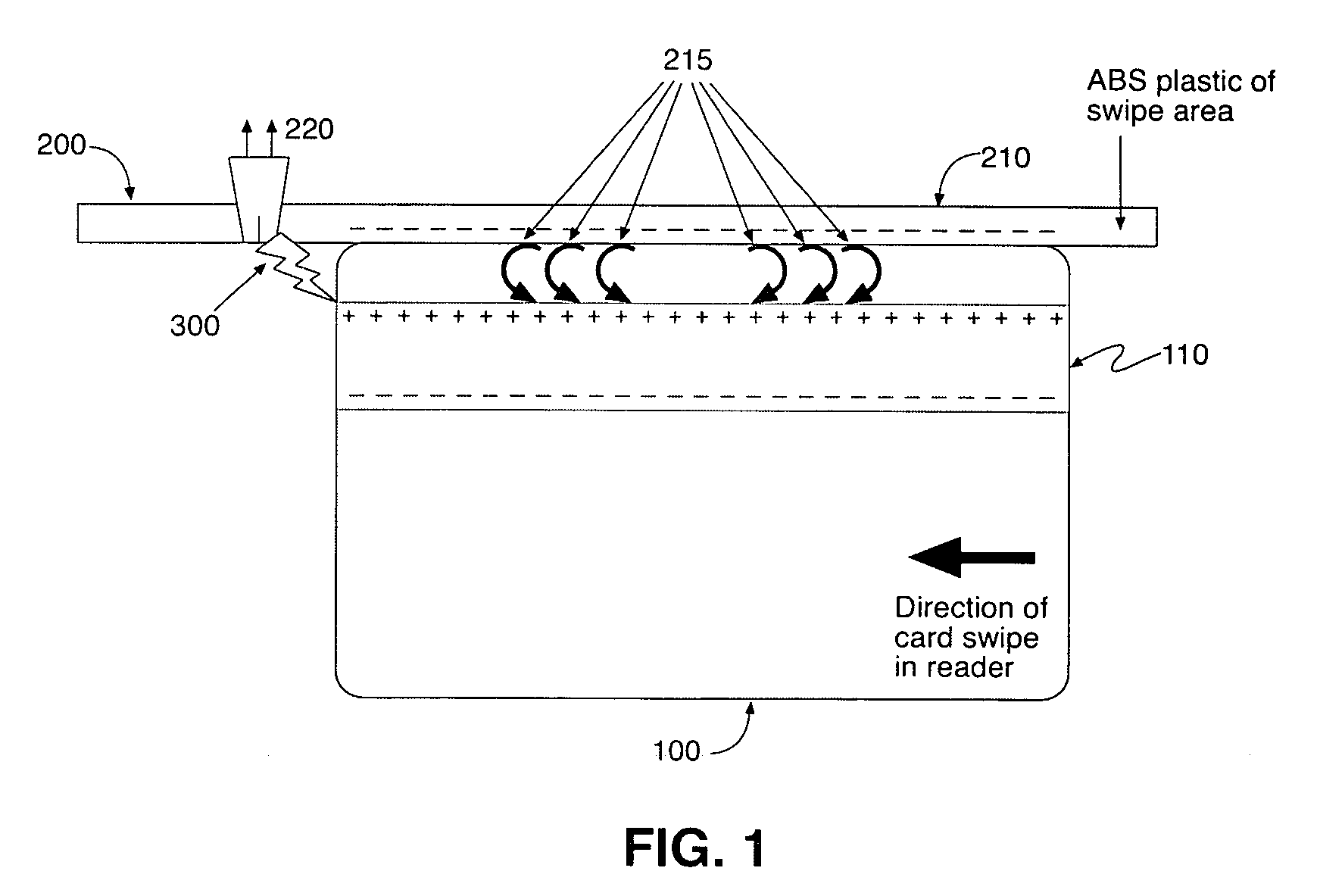Method of reducing electro-static discharge (ESD) from conductors on insulators
a technology of electrostatic discharge and conductor, which is applied in the direction of emergency protective arrangements for limiting excess voltage/current, instruments, and record information storage, etc., can solve the problems of insufficient design of certain electronic devices in the marketplace low tolerance to esd, and inability to effectively deal with esd. to achieve the effect of reducing the amount of electrostatic charge carried
- Summary
- Abstract
- Description
- Claims
- Application Information
AI Technical Summary
Benefits of technology
Problems solved by technology
Method used
Image
Examples
Embodiment Construction
[0027]There are many examples of insulator devices that carry conducting components that can be charged and then discharged into an electronic device. The inventive method is applicable to reduce or eliminate ESD from a conductive component 110 on an insulator 100. Turning now to FIG. 1, the inventive method is described as applied to a polyvinyl chloride (PVC) plastic card (insulator) 100 with a metal conductive coated magnetic stripe (metal component) 110 to reduce or eliminate ESD from a metal component 110 on an insulator 100. A PVC plastic card 100 carrying a metalized magnetic stripe (“mag stripe”) 110 is inserted into a magnetic stripe card reader 200, such as a point of sale (POS) terminal 200, where ESD 300 from the metalized magnetic stripe 110 into the POS terminal 200 can disrupt the operation of the POS terminal 200. The following descriptions describe how a conductor or conductive layer 110 on a non-conducting carrier 100 can hold charge that can disrupt electronic dev...
PUM
 Login to View More
Login to View More Abstract
Description
Claims
Application Information
 Login to View More
Login to View More - R&D
- Intellectual Property
- Life Sciences
- Materials
- Tech Scout
- Unparalleled Data Quality
- Higher Quality Content
- 60% Fewer Hallucinations
Browse by: Latest US Patents, China's latest patents, Technical Efficacy Thesaurus, Application Domain, Technology Topic, Popular Technical Reports.
© 2025 PatSnap. All rights reserved.Legal|Privacy policy|Modern Slavery Act Transparency Statement|Sitemap|About US| Contact US: help@patsnap.com



